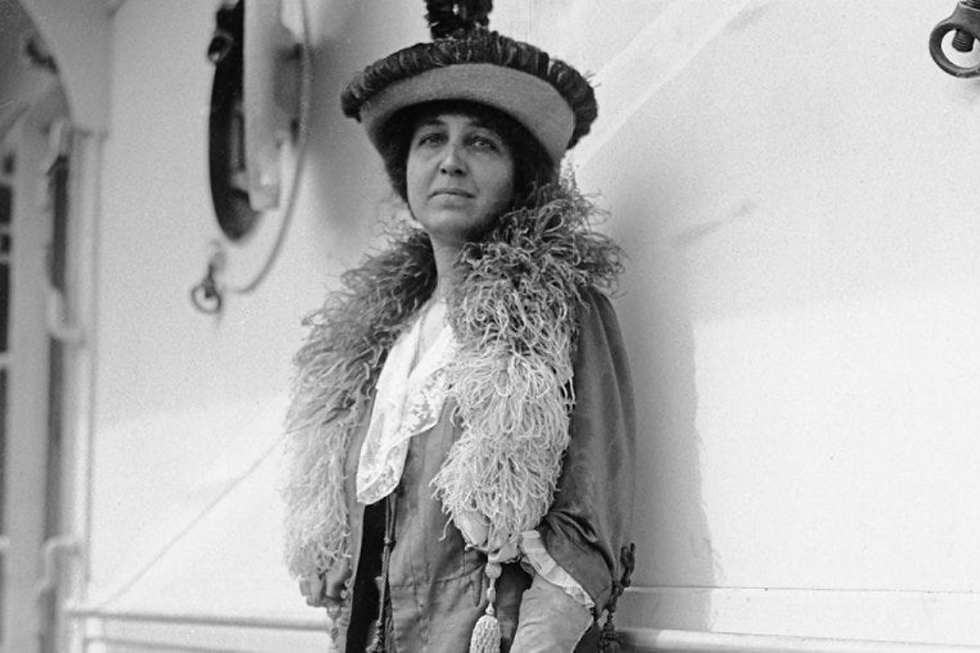Without a Woman: Rachel Zimmerman-Brachman Gave Voice to the Voiceless
- iWomanTV

- Sep 25
- 3 min read
Updated: Oct 6
Imagine being just twelve years old and changing the world for people with disabilities. That’s exactly what Rachel Zimmerman-Brachman did in 1984, and the ripple effects of her innovation are still being felt today.
The Spark of Innovation
At just 12 years old, with a deep interest in science, Zimmerman stumbled upon a communication system while working on a science fair project. Blissymbols is a symbol-based communication system developed in the 1940s that had been helping non-verbal individuals express themselves for decades. However, it still required an interpreter: users would point to symbols, and someone else would translate.
Zimmerman believed there had to be a better, more independent way. So she built it.
The Blissymbols Printer
She created the Blissymbols Printer, a system that allowed users to touch symbols on a board. Her software would then translate these symbols into written language on a computer screen. For the first time, non-verbal users could “speak” directly without an interpreter. This groundbreaking invention opened the door to greater independence and even made digital communication, like email, possible for those relying on assistive language systems.
Acknowledgment and Impact
This young inventor's innovation won her a silver medal at the World Exhibition of Achievement of Young Inventors. It laid the groundwork for future advances in accessible communication technology. Her work has had lasting effects, inspiring others to explore and innovate in the field of assistive technology.
A Journey of Education and Exploration
Later in life, Zimmerman earned a degree in Physics from Brandeis University and then a Master's in Space Studies from the International Space University. Throughout her career, she spent time at many other top-tier institutions, eventually finding herself at NASA. She has continued her work on integrating assistive technologies with space science to bring her innovations to communities in need.
Passion for Education
Her passion for education is equally inspiring. She has led professional development for science teachers and served as president of Science Education for Students with Disabilities. Additionally, she brought space education to students in over 50 countries through an international essay contest focused on Saturn. Today, her public engagement work continues with NASA’s Cassini-Huygens mission, helping translate complex scientific missions into learning opportunities for students worldwide.
Breaking Barriers
Rachel Zimmerman-Brachman is a powerful example of what happens when compassion meets curiosity. Her early work gave a voice to the voiceless, and her ongoing efforts in space education and assistive tech continue to break barriers.
The Future of Assistive Technology
As we look to the future, the importance of assistive technology cannot be overstated. It empowers individuals with disabilities, allowing them to communicate, learn, and thrive in ways that were once unimaginable. The innovations sparked by pioneers like Zimmerman pave the way for future advancements.
Embracing Change
In a world that constantly evolves, embracing change is crucial. We must continue to support and advocate for technologies that enhance accessibility. By doing so, we not only honor the legacy of innovators like Rachel Zimmerman-Brachman but also ensure that future generations have the tools they need to succeed.
Conclusion
Let us celebrate the achievements of individuals who dare to dream and innovate. Their contributions shape our world and inspire us to push boundaries. Together, we can create a more inclusive society where everyone has the opportunity to thrive.
Rachel's journey reminds us that with curiosity and compassion, we can change the world. Let's carry that spirit forward and continue to champion advancements in assistive technology and education.
For more insights and inspiration, check out iWoman TV.



Comments